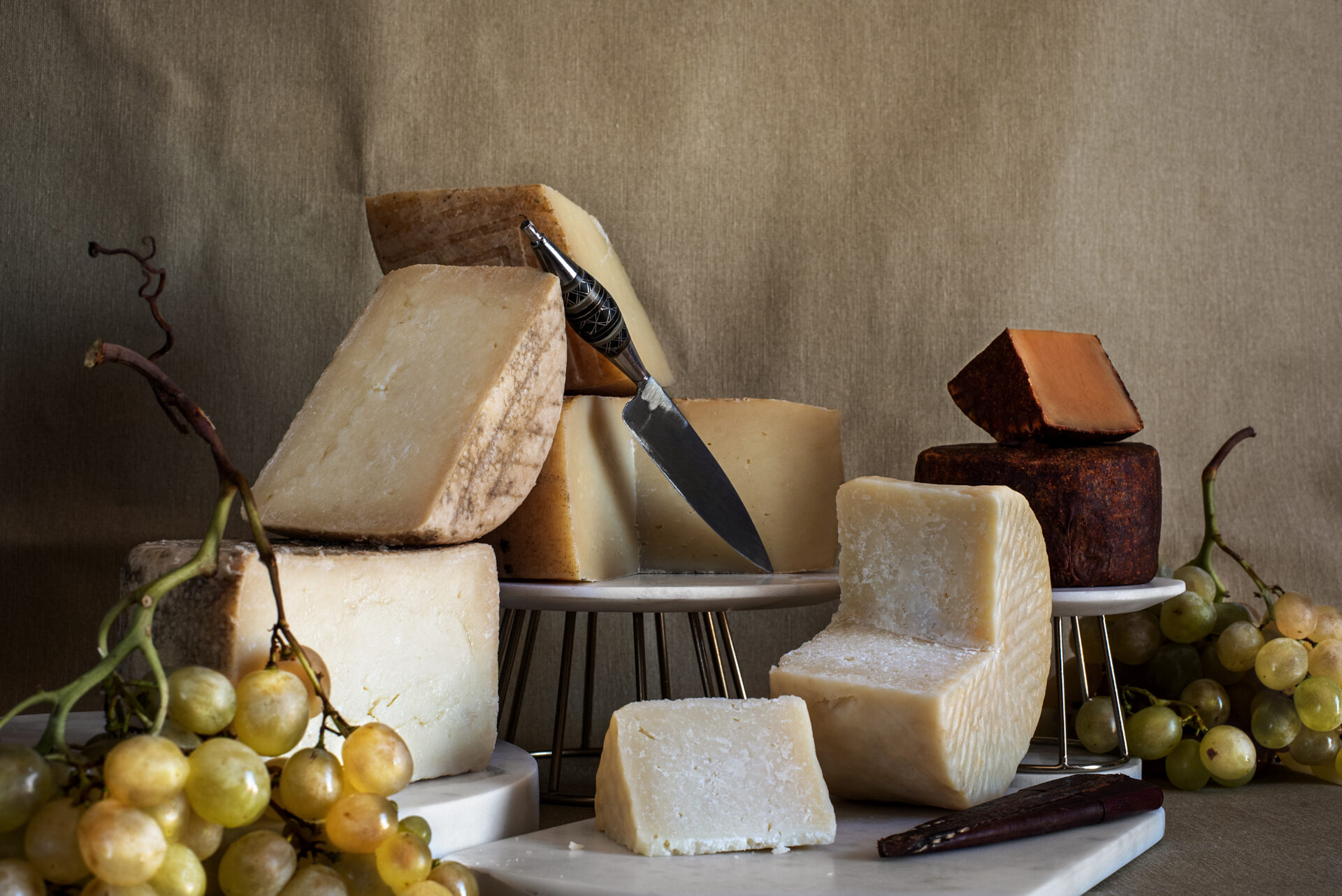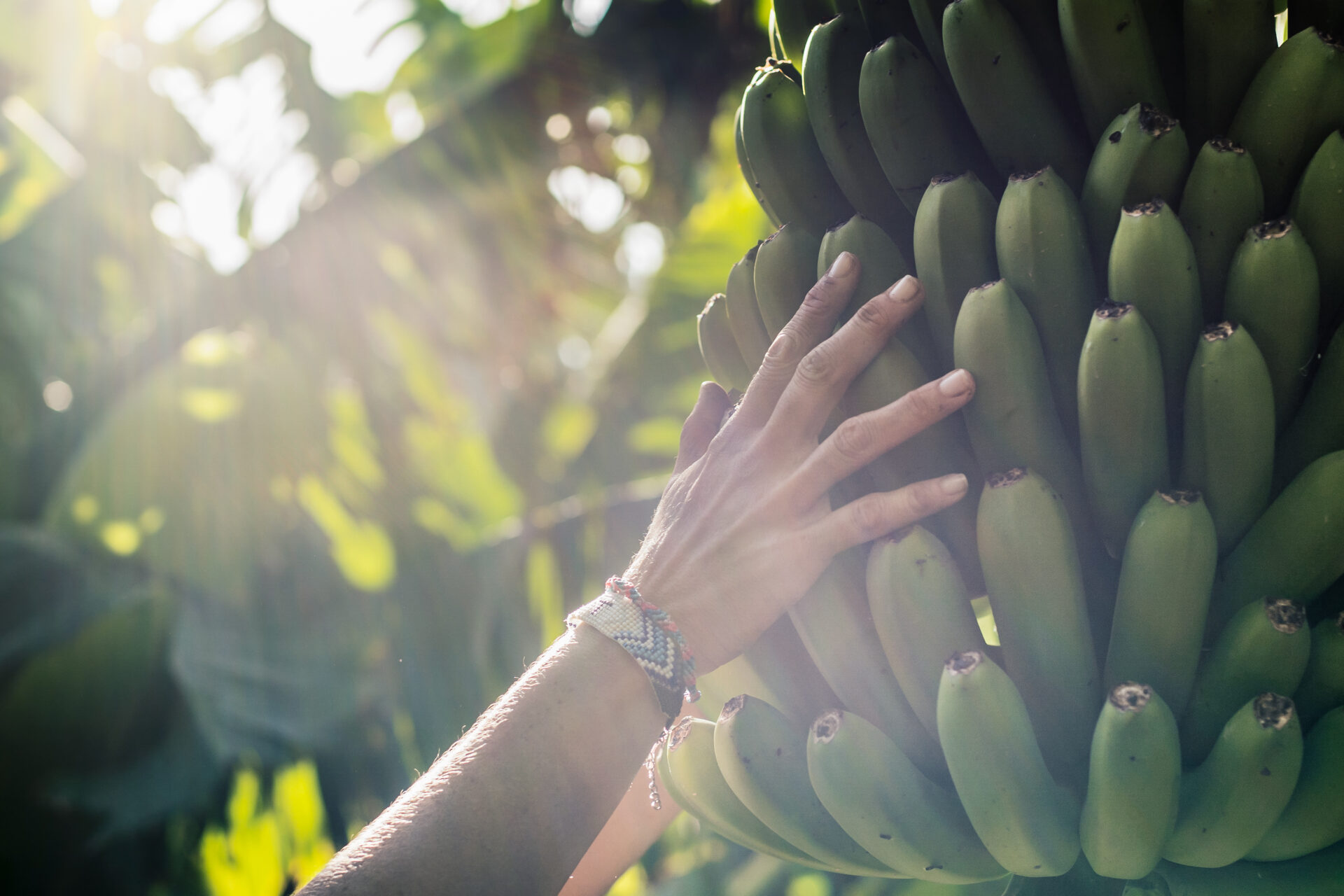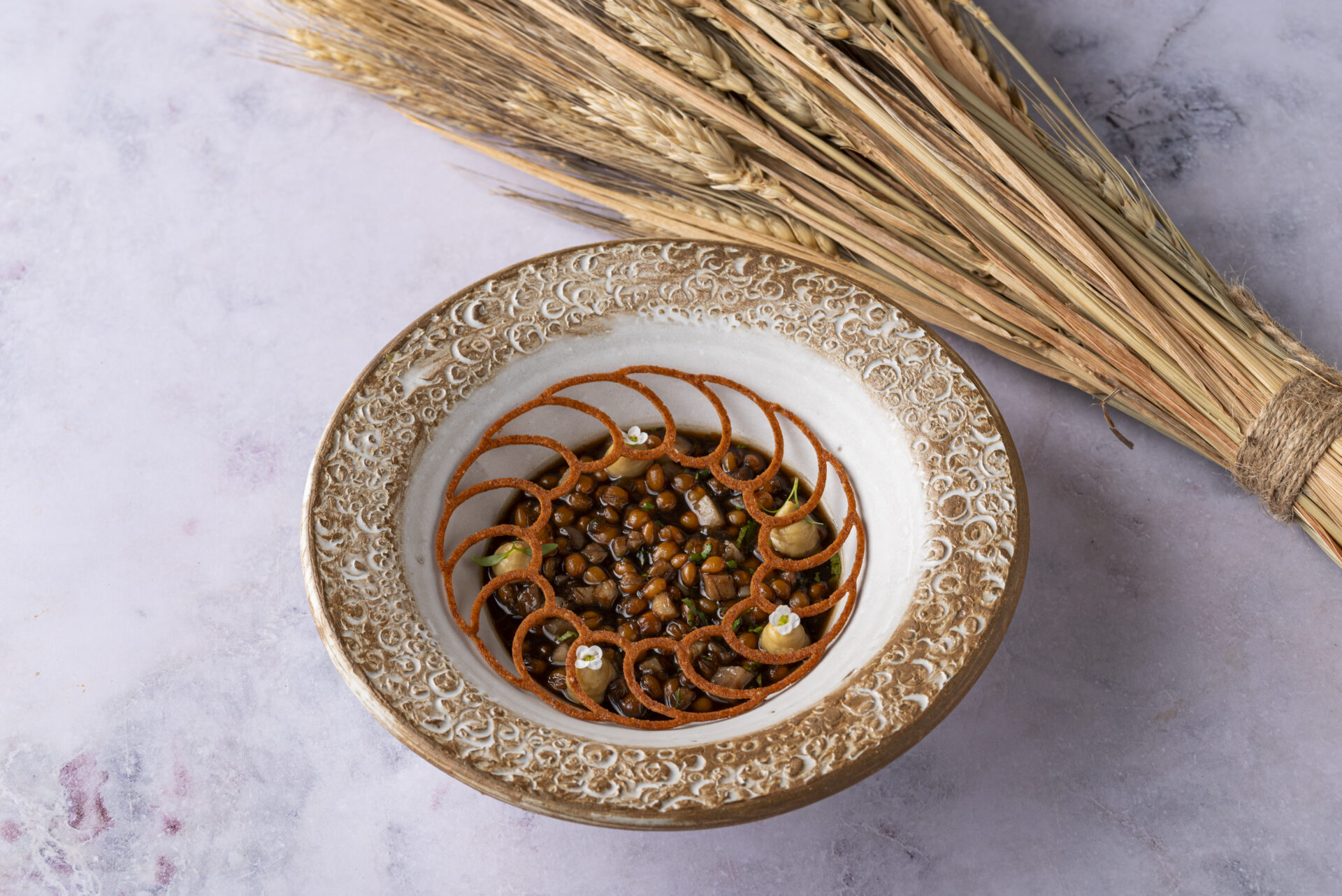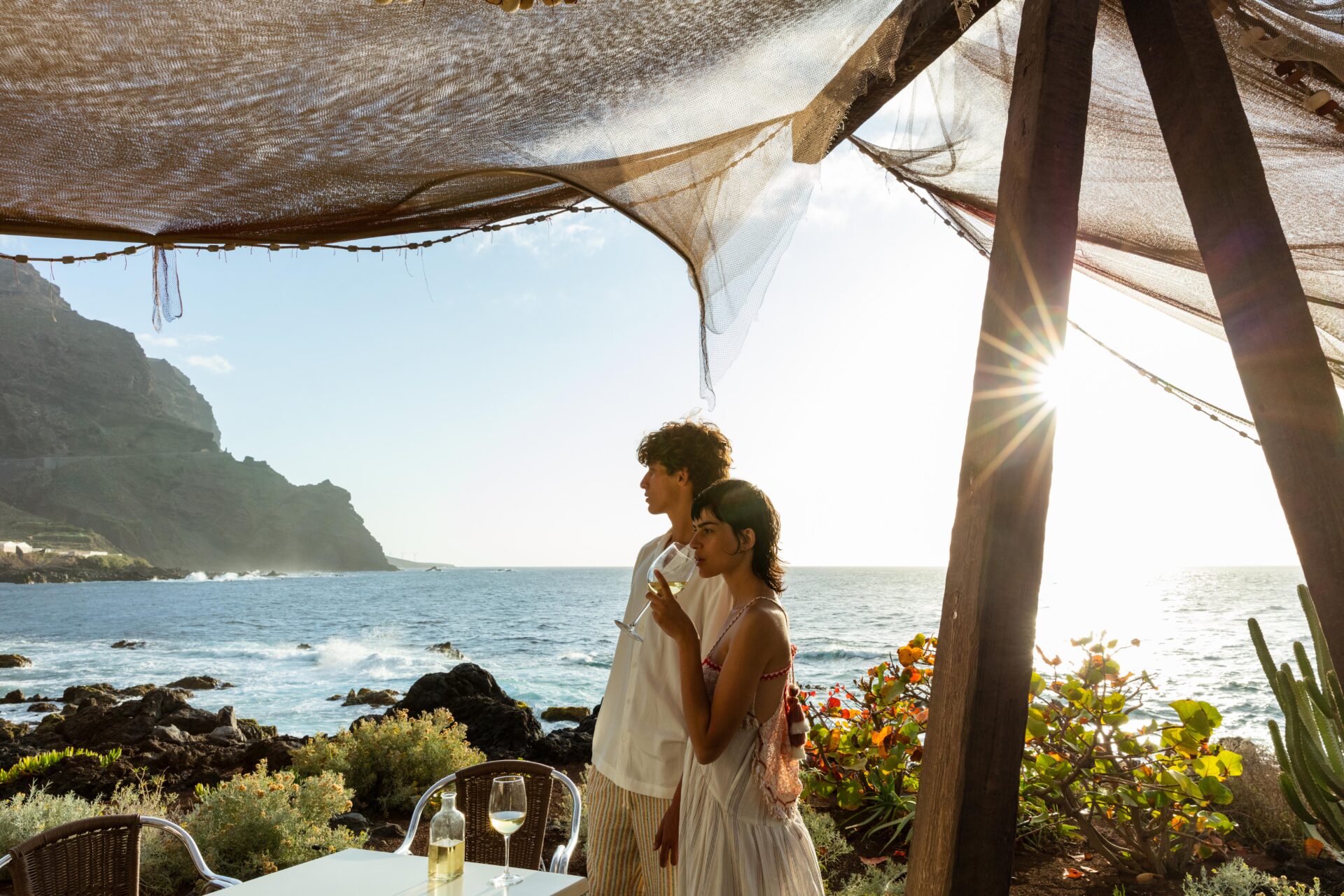In addition to its warm waters, its volcanic sandy beaches, its natural spaces and the many charms of the island, there is a gastronomic journey worth experiencing once in a lifetime (or rather, a few times) with the perfect pairing: the excellence offered by the wines of its land

Between tradition and the avant-garde, with Canarian roots in each aroma and innovation in the proposals of each chef who forms part of the island’s gastronomy. In Tenerife, cuisine is an integral part of the local culture and a very important hallmark, offering a culinary diversity that highlights the connection between Europe, Africa and America, influenced by the Atlantic. The island’s cuisine stands out on the international stage, highlighting the many local and seasonal products, framed by the climate, biodiversity, the terrain and heritage that deserve to be visited.
In Tenerife, you will enjoy its guachinches, which are characteristic of the island, restaurants serving traditional local cuisine, or establishments with Michelin stars and Repsol suns that take the island’s meat, fish, fruit, and vegetables to their maximum expression. And the wines? Yet another surprise. The volcanic soil in which the vines grow and the trade winds that blow throughout the year make them unique in the world.
Tasting the most traditional
An array of colours unfolds like a canvas of nature in the nooks and crannies of Tenerife’s larder. The infinite fruits, with their shapes and nuances, intertwine in a dance of flavours and aromas. With its golden skin and sweet flesh, the banana shares a space with the avocado, its intense green hiding a creamy treasure. With its juicy orange flesh, the papaya is like a ripe sun that lights up the room.
But this pantry is not just about fruit. Nature is also at work in the fresh fish resting on ice. The sama, with its silvery scales, the wreckfish, the vieja with its rough skin and the tuna form part of the table. Honey, the golden liquid that holds the secrets of flowers, has more than a dozen varieties, and the goat’s and sheep’s cheeses reflect in their aromas the textures that intertwine like the branches of an old almond tree. Meat products also stand out, with rabbits, goats and black pigs, all with their own designations of origin and protected geographical indications: they are the guardians of ancestral traditions.
When these culinary treasures are brought together in the kitchen, the meats are seasoned with mojo, our magic sauce that awakens the senses. Soups and stews, like ancient incantations, are simmered. Papas Antiguas de Canarias – wrinkled potatoes full of flavour – are served with a touch of sea salt. And gofio, the toasted cereal powder, is the island’s soul. Corn, barley, wheat: its grains store the memory of the fields and the mills.
The island is savoured in every mouthful, where the land, the sea and the love of authenticity are celebrated.

A luxurious gastronomic constellation
In the nooks and crannies of the island, where the Atlantic caresses its shores and the winds whisper unforgettable stories, gastronomy stands like a shining beacon. Two restaurants – Haydée by Víctor Suárez, in La Orotava, and Taste 1973, under the direction of Diego Schattenhofer at the Hotel Villa Cortés in Arona – have been awarded their first Michelin star. This recognition by the Michelin Guide is a tribute to their exceptional cuisine.
Víctor Suárez displays his creativity in two menus: Atlántico and Raíz. Each dish is a canvas where he fuses flavours, colours and textures woven with threads of childhood memories and aromas from other cultures. The island comes alive on your palate, and each mouthful is a poem dedicated to tradition and innovation.
Taste 1973, on the other hand, features dishes steeped in the Canary Islands that are a symphony of Guanche roots. Marine biologists, neurologists and historians form part of its multidisciplinary team, and its technique embraces ancestral memory.

With these new Michelin stars, Tenerife now has a total of nine stars in seven of its restaurants with two stars, both the M.B. at The Ritz Carlton Abama, with Erlantz Gorostiza at the helm of the kitchen, which has found a clearly winning formula in the fusion of Mediterranean cuisine and the island’s traditions; and El Rincón de Juan Carlos, a tasty feast of Canarian dishes reinvented by Juan Carlos and Jonathan, the Padrón brothers. El Nub in Bahía del Duque, with the words “creativity” and “avant-garde” as the best definition of its cuisine, Kabuki and San Hô in Royal Hideaway Corales, with an exciting and fun proposal that fuses Japanese, Peruvian and Canarian cuisine, also hold a Michelin star.
Hence, together with the numerous Repsol suns, the island is consolidating its position as a gastronomic epicentre, where quality, respect for local ingredients and innovation lead to a sublime experience at every meal.
Uncorking Tenerife’s volcanoes
Tenerife, the island of wines and breathtaking landscapes, displays its diversity in soils and vine-growing techniques, the personality of which is treasured in the impressive wine-growing heritage of Tenerife. Not for nothing, this is one of the island’s main crops, which has six designations of origin: Orotova Valley, Ycoden-Daute-Isora, Tacoronte-Acentejo, Güímar Valley, Abona and D.O.P. Islas Canarias.

With its traditional methods, heroic viticulture gives singularity and exceptionality to the island’s wines. Native varieties such as listán, albillo, moscatel, verdello and marmajuelo have survived since pre-phylloxera times, untraceable in the rest of the country after the devastating phylloxera plague in the 19th Century. Among them, the malvasia grape, ancient and expressive, displays its aromas in these latitudes. The listán negro, robust and aromatic, and the negramoll, with its velvety mouthfeel, complete Tenerife’s wine palette.
Although vineyards can be found in almost every municipality on the island, you can learn about their history, curiosities and milestones at the Casa del Vino in El Sauzal. Located in a 17th-century mansion called Hacienda de San Simón, its various rooms house the museum, a wine cellar and tasting rooms where you can sample wines from all the designations of origin. The best way to learn about the winemaking process is to visit a winery, where the winemakers will reveal their techniques and secrets. You can also enjoy brunch among the vineyards or have a multi-sensory experience there.
